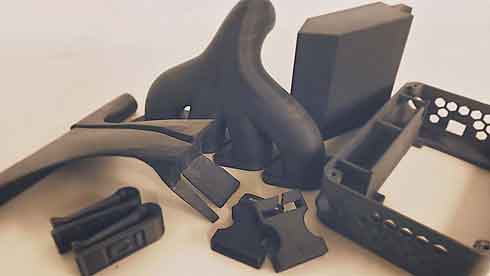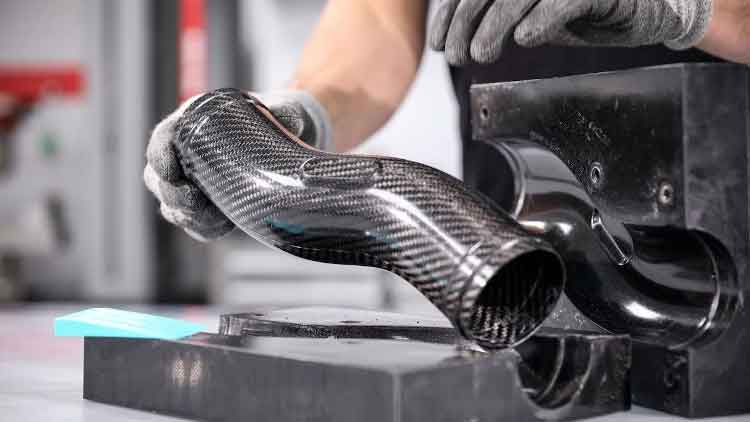Carbon fiber makes gear like bikes, boats and car parts lighter, stiffer and cooler. But it also costs a lot more to produce than metal.
To make a part from carbon fiber you need to weave the threads together into lattice sheets and then bond them with a resin. This process, called curing, is what gives carbon fiber its strength and rigidity.
The Basics
Carbon fiber is a material that can make bike frames five times stronger than steel and twice as stiff, while also being significantly lighter. The material is part of a category known as fiber-reinforced plastics that includes fiberglass and Kevlar (best known for creating bulletproof vests).
Thousands of microscopic strands of bonded carbon are suspended in epoxy resin, making them stiff along their axis and strong in tension or compression—an ideal combination for load-bearing parts like frame spars and engine mounts. The composite has an incredibly low weight, a property that helps automakers meet Corporate Average Fuel Economy standards and push forward electric vehicle technologies.
It’s a high-tech material with amazing properties, but it’s also expensive to produce. According to industry officials at the recent JEC Americas trade show, carbon fiber costs about $10 a pound for manufacturers to get their hands on. Add in manufacturing and other expenses, and that’s why you see a $2,000 price tag on some carbon bikes.
The Process
Carbon fiber, as you may already know, is a high-tech material. Its production process is very time and energy consuming. This is one of the main reasons that carbon fiber parts are so expensive.
The production of carbon fiber begins with a base material called polyacrylonitrile, Gizmodo reports. This is heated at high temperatures until it breaks down into carbon strands. These are then woven into a fabric that’s combined with resin to create the final carbon fiber composite, Navigate to this website.
Manufacturers can use a variety of different layup methods to make carbon fiber components, such as prepreg technology, vacuum bagging, and resin transfer molding (RTM). The type of layup used determines the strength of the final product.
Carbon-fiber parts can be made stiffer than metal ones. This helps them stay planted on the road or track when turning, and increases traction and speed. Depending on the application, manufacturers can even mix in other materials like Kevlar or wood to achieve specific performance and aesthetics.
The Materials

While carbon fiber is an amazing material, it’s not cheap to make. It starts with a raw material called polyacrylonitrile (or rayon), which is made from long strings of molecules that come from carbon atoms.
These are woven together into a cloth that’s then combined with resin to form the final product. The resin acts as a glue to bind the fibers together into a solid material that has a high strength-to-weight ratio.
Then there’s the mold that the fabric is put into, which must be designed and built using specialized software. This process can take days, whereas making a metal part takes mere minutes.
Carbon fiber parts are also lighter than their metal counterparts, which means that they use less fuel and electricity during operation. That results in a smaller environmental footprint and a lower cost of ownership for customers. Plus, they can help improve a car’s performance by making it lighter, which makes it faster and more agile.
The Final Product
The resulting material is extremely strong and light, which makes it perfect for cycling frames, F1 cars, robots, fishing rods, and drones. Carbon fiber is even able to resist fire (though it will burn if exposed for long enough).
But it’s still very expensive. Raw materials, energy, and production software/machinery make carbon fiber composites more expensive to produce than other materials.
It also takes a lot of time. Carbon fiber is excellent at resisting pulling, or tensile, forces, but metals fare better under compressive ones. The woven carbon fiber needs to be cut, cured, and molded to create the finished product.
Summary:
The good news is that carbon composites are getting cheaper to produce as the technology advances. In the future, we may see car parts made of CFRP that are less than half as expensive as steel. But for now, it’s a luxury product. Unless you’re buying one of those exotic race cars, that is.
